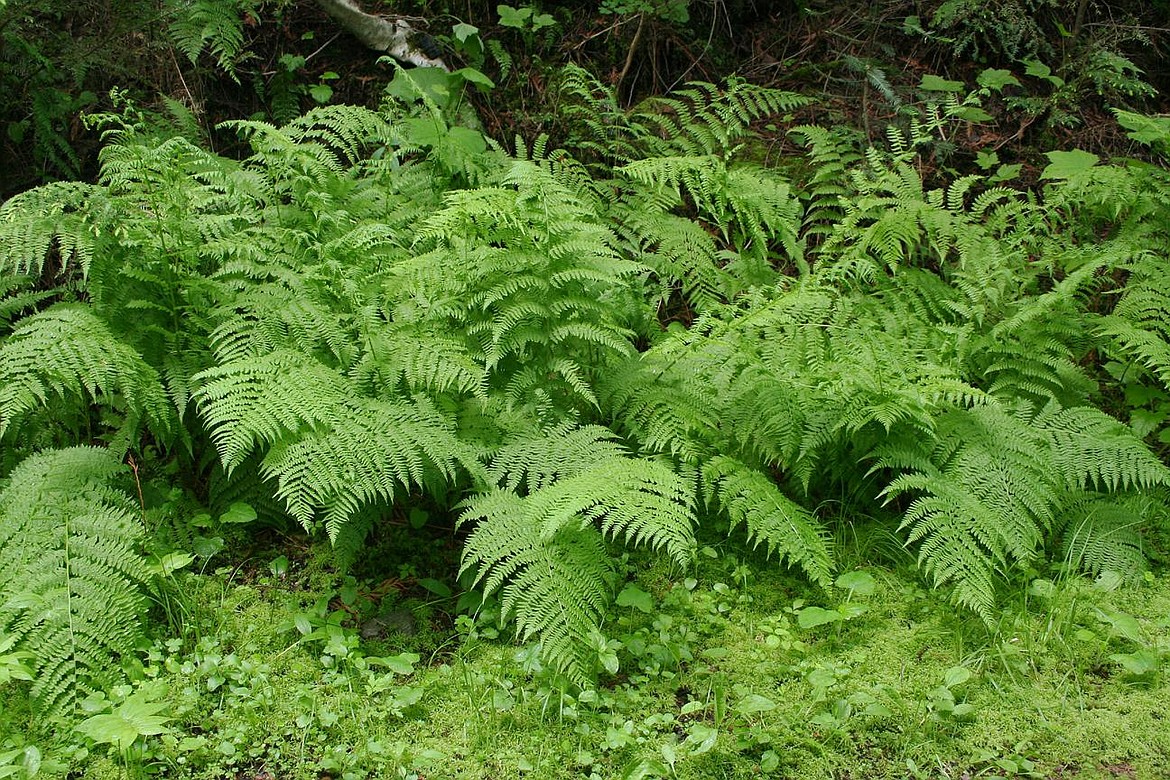PLANT NOTES: Lady Fern
Ferns are primitive plants that do not produce flowers or seeds. Instead they grow leaf-like structures called fronds which can be evergreen or deciduous depending on the species. They reproduce by spores, often formed on the underside of the frond.
Lady Fern (Athyrium filix-femina) is widespread in the shady, moist glades and woodlands of temperate regions in the Northern Hemisphere. Curled leaf buds emerge in the spring as “fiddleheads” from a central crown and unfold into graceful arching fronds 2-5 feet tall. The lance-shaped frond is pointed at each end and widest in the middle. Lacy, light green divided leaflets are arranged alternately along frond's the central stem.
Lady Fern prefers shade or dappled sun and will tolerate almost complete shade. It's an excellent choice for the north side of buildings, along shaded stream banks, in swampy areas and as an understory planting for larger trees and upright shrubs. While it prefers moist soils, Lady Fern is more drought tolerant and will adapt to more sun than other ferns. The one soil type it will not tolerate is clay.
This deciduous fern reproduces by spores which develop in two rows as dark brown, round spots, called sori, on the underside of the frond leaflets. The sori are covered by a crescent shaped indusium protecting the developing spores. As the leaf dries out it releases the mature spores. Lady Fern also spreads by rhizomes and is most easily cultivated by dividing crown clumps in the spring.
Because the fronds are delicate and can be damaged by wind, it's good to plant in a sheltered area of the garden. Seldom bothered by deer, Lady Fern is also free of disease and insect problems. Fronds die with autumn frost and can be clipped off to maintain a neater appearance. Clumps can spread up to 7 feet. That may be too aggressive for a formal part of your garden, but perfect as a ground cover on the shady side of a building.
You can find Lady Fern in the Moist Forest Habitat in the North Idaho Native Plant Arboretum. Open to the public, parking for the Arboretum is at 611 S. Ella Ave. in Sandpoint, ID. It is described and pictured on page 209 of the KNPS publication, Landscaping with Native Plants in the Idaho Panhandle, available at local bookstores and the Bonner County History Museum.
Native Plant Notes are created by the Kinnikinnick Native Plant Society. To learn more about KNPS and the North Idaho Native Plant Arboretum, visit www.nativeplantsociety.org.

